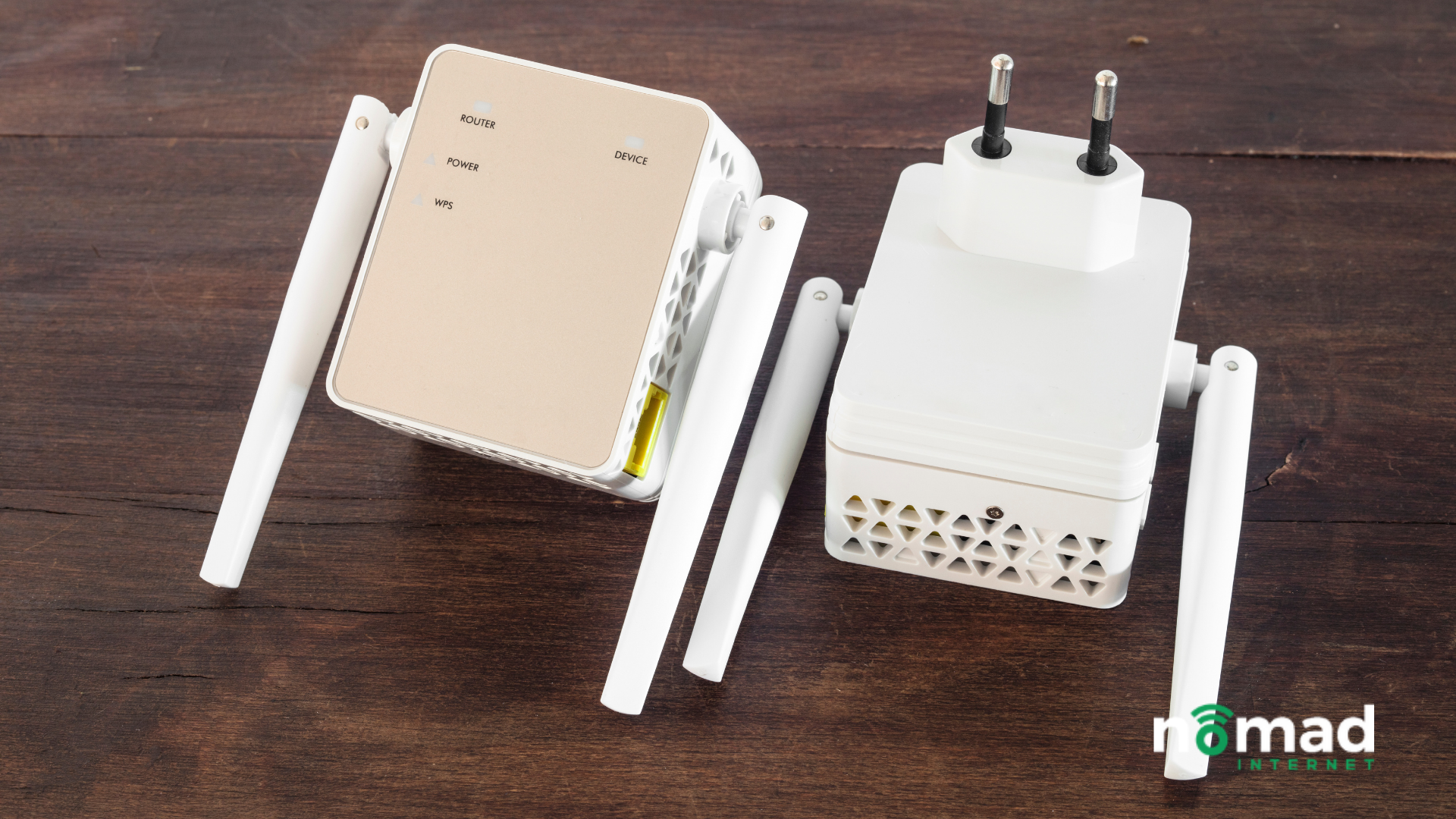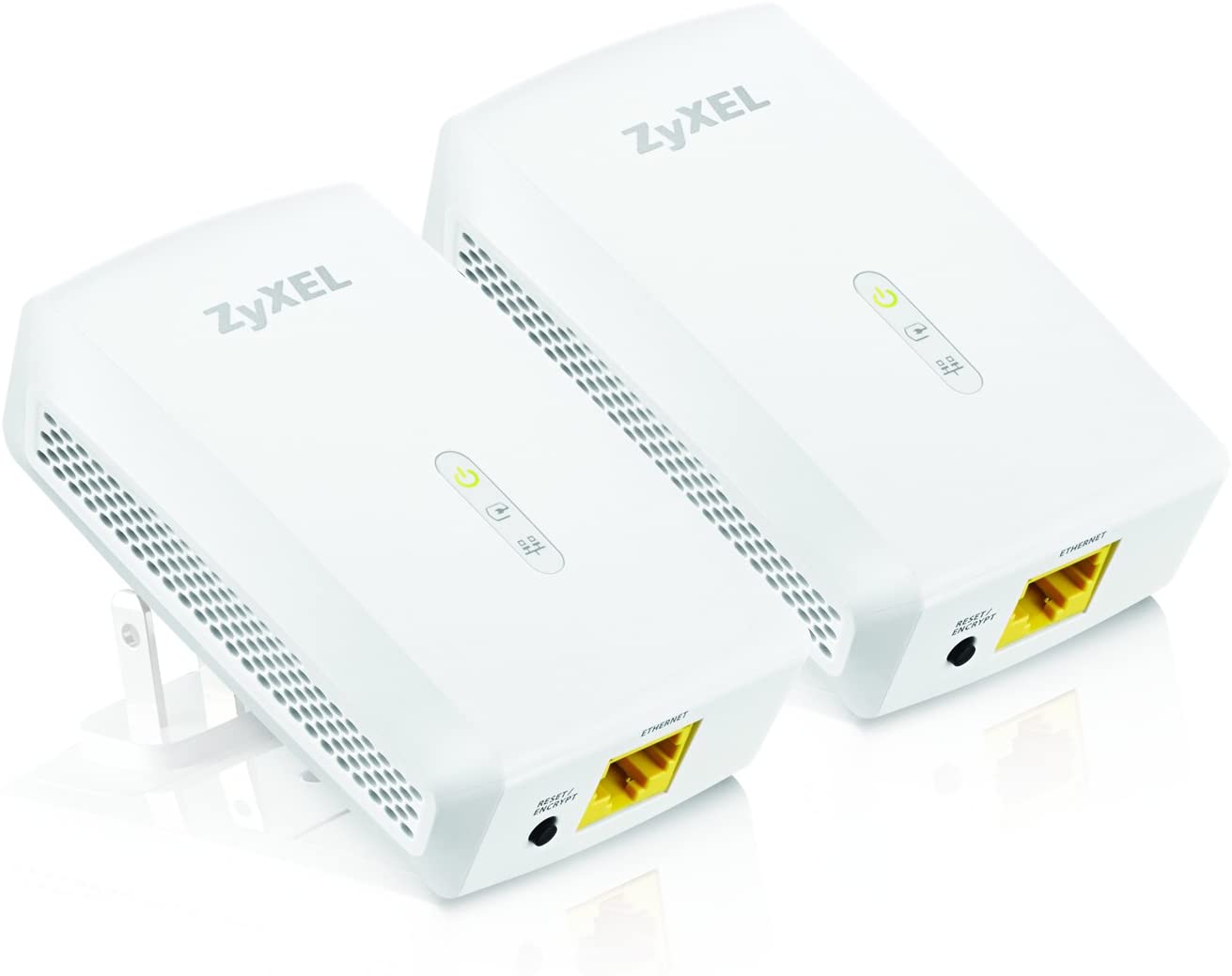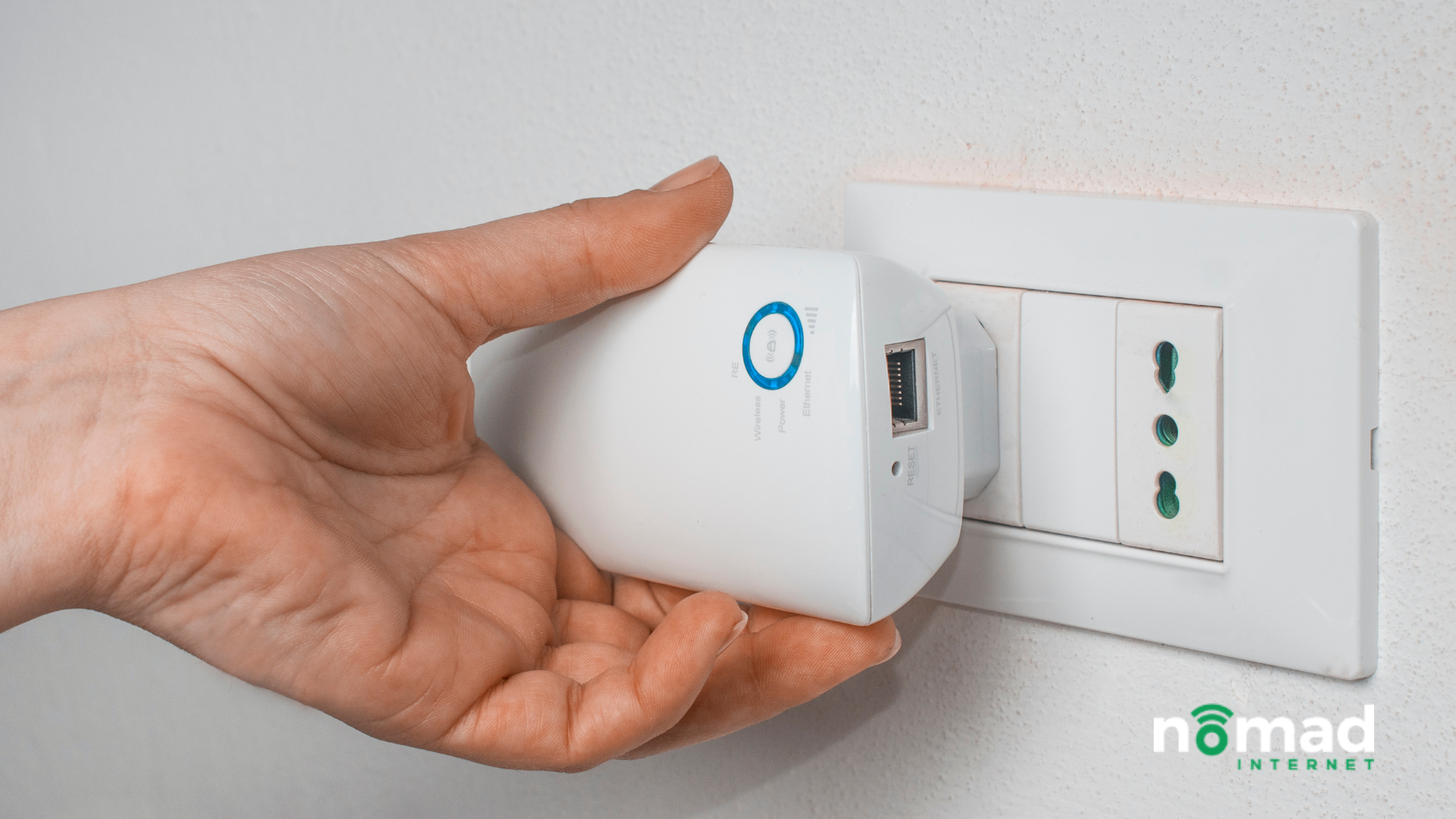You may have accepted that when you’re at home, the further you are from your router, the weaker your internet connection will be. But it actually doesn’t have to be this way. With a Wi-Fi extender, you can expand your wireless internet connection so you can more freely move around your house without worrying about dead spots. Here’s what you need to know about this solution to internet connection problems!

What is a Wi-Fi Extender?
A Wi-Fi extender should do two things: help eliminate dead spots in your home and help your Wi-Fi be more consistent in every room of your home. Dead spots or internet connection problems can occur because of walls or other obstructions like furniture. It’s especially common for one floor in your home (the one with your router) to have good Wi-Fi and the other floors to lack it. If you have a large gathering with family and friends, and more people than usual are trying to connect to your Wi-Fi, you may quickly discover that your day-to-day Wi-Fi coverage needs a little boost. Sometimes if you have a larger space, having some variation in the quality of your connection is pretty much inevitable.
Your Wi-Fi extender can be wirelessly connected to your router or connect directly to the router. The extender works by intercepting the Wi-Fi signal and re-broadcast it to a different channel. You may have also heard of this type of device referred to as a Wi-Fi booster.
Luckily, Wi-Fi extenders offer users the same amount of security as a traditional Wi-Fi network using WEP, WPA, or WPA2 encryption. So, privacy concerns should not be the thing that stops you from making the upgrade.
Do Wi-Fi Extenders Work?
The concept sounds great, but do Wi-Fi extenders actually work? It depends.

In many circumstances, getting a Wi-Fi extender should not be the first solution you try to fix bad Wi-Fi. First of all, you should make sure that your current router is up-to-date and that it’s in the right place. Try moving your router around your home to see if a different placement improves your Wi-Fi coverage. Ideally, your Wi-Fi router should be in a central location on your home’s main floor rather than at one far end of the home. You might also try upgrading your router if the one you’re currently using has been in your home for several years.
Some people will try a powerline adapter before they resort to an extender. This one from ZyXEL is incredibly quick and easy to set up. So if you don’t consider yourself to be the most tech-savvy person in the world, it’s a great choice!

After you’ve explored all your options and ensured that you have the correct equipment, you can move on to looking into an extender. If your extender has been placed properly and you have a great signal to begin with, you will hopefully discover that a Wi-Fi extender is the solution to your Wi-Fi woes.
You should keep in mind that extending your signal does not necessarily mean you will now have the ability to use however much internet you want wherever you want it. For example, maybe you want to get Wi-Fi on your desk so you place an extender halfway between your router and the deck. Now you might be able to browse the web on the deck but you won’t necessarily be able to stream your favorite TV show.
How to Set Up a Wi-Fi Extender
Since there are a variety of different extenders on the market, the way you set yours up will vary slightly depending on what one you purchase. Generally, one of the first steps of extender setup is looking for a button on your router or extender that says WPS which stands for “Wi-Fi protected setup.” After you press the button, you’ll have two minutes when the devices will connect to each other without having to enter your Wi-Fi password.
The manufacturer of your extender should also have a mobile app that you’ll need to download to use during the setup stage. You’ll probably have to input your email and a password to create an account for the app. You can have the extender scan your home through the app. You’ll probably have to start with the 2.4GHz band before you have to repeat the process for a 5GHz. You will also need to enter your network password.
Connecting to the Extender
Once all of this is done, your extender should be linked to your router. The extender will appear with the same name as your Wi-Fi network. However, you’ll be able to differentiate the router from the extender because the extender will have “EXT” at the end. You are able to change the name of the extender at this point if you’d like.

Keep in mind that after your extender is installed, your devices won’t necessarily automatically connect to the extender. In some areas of your home, your computers and mobile devices will likely be able to detect both your router and the extender and they may automatically connect to the router. So if you know you’re in a spot that struggles with getting a good internet connection, make sure you switch over to the second network that’s created by your extender. However, if you’re in a spot where you can only get Wi-Fi with the extended network, your device may know to connect to the extender automatically.
Where to Place a Wi-Fi Extender
When you’re setting up your Wi-Fi extender, you need to carefully consider where you’ll install it. You need to think about a spot for your extender in terms of two places: your router’s location and the area of the home that the Wi-Fi seems to go out. The extender should not be too far away from either so that it can effectively bridge the two. If the extender is too far away from your router, this could lead to more signal loss than necessary. You should try to place your extender about halfway between your router and the place where you want the signal to be re-broadcast.
There are some specific objects that you’ll want to avoid placing your extender by, such as something that’s reflective like a mirror or anything made of metal. You also want to place your extender far away from anything that would absorb the signal like a closet or a wall. Anything that has a tendency to interfere with your Wi-Fi signal like your microwave or even your refrigerator is likely to also pose a problem with your extender. If you’re struggling with finding the perfect spot, you might try plugging the extender into an AC extension cord.
You may need to do a little bit of trial and error. You’ll know you’ve found the right spot if your Wi-Fi connection improves in your dead spots.
What is the Best Wi-Fi Extender?
You’ll find no shortage of options for extenders on the market. TP Link is one of the most popular brands for Wi-Fi extenders.
There are two main types of extenders: plug-in and desktop. A plug-in extender is a small device that you plug into your wall outlet. These devices have some kind of antenna whether they are internal or external. There’s usually one LAN port for a TV or gaming console and one USB port for printers and flash drives. On the other hand, a desktop extender resembles your home’s wireless router. Usually, these devices will have an antenna that you can adjust as well as multiple ports for USB devices, gaming consoles, and TVs.
The type of extender that’s best for your home depends on your needs. If you don’t use a lot of Wi-Fi or you don’t have much of a budget to work with, you’ll probably be able to get by using a plug-in extender. But if you have a heavy amount of daily Wi-Fi use, you’ll need to be willing to invest a little more and purchase a desktop extender.
One of the downsides of some Wi-Fi extenders is that you may notice some speed loss. If you want to minimize that speed loss, you will probably want to go with a dual-band extender as opposed to a single-band version. Of course, this option is more expensive, but if you’re a heavy Wi-Fi user, it may be worth it!
If you want to get Wi-Fi in your pool house or even just outside, there are also some options for Wi-Fi extenders that are weather-proof and specifically designed for the outdoors. This option from WAVLINK is sturdy enough to perform in harsh weather conditions and it’s even dual-banded for fast speeds.
